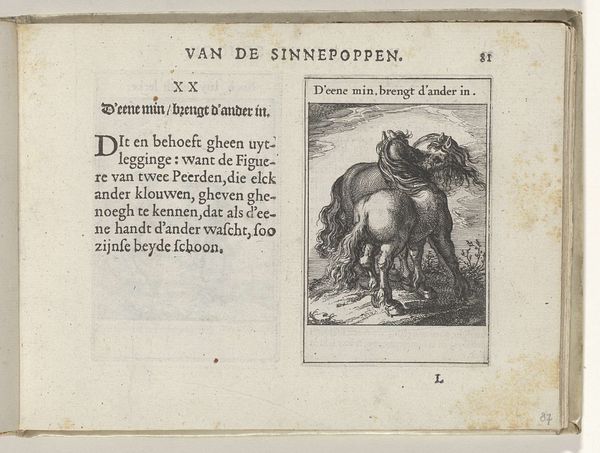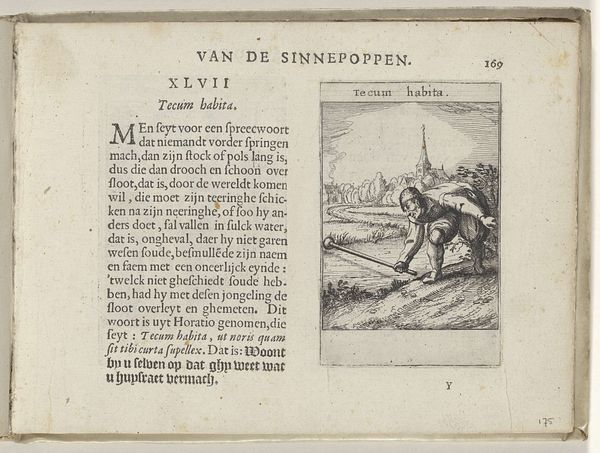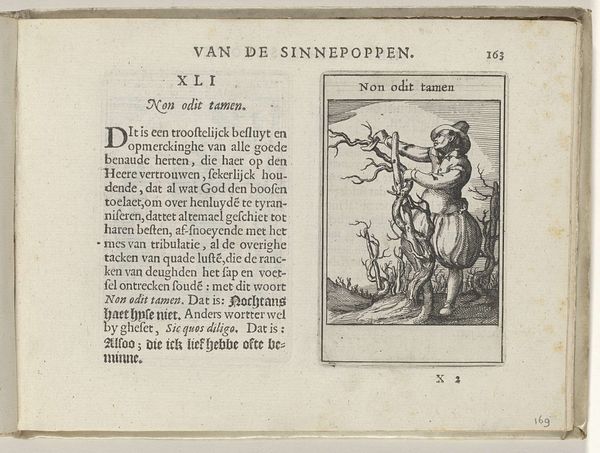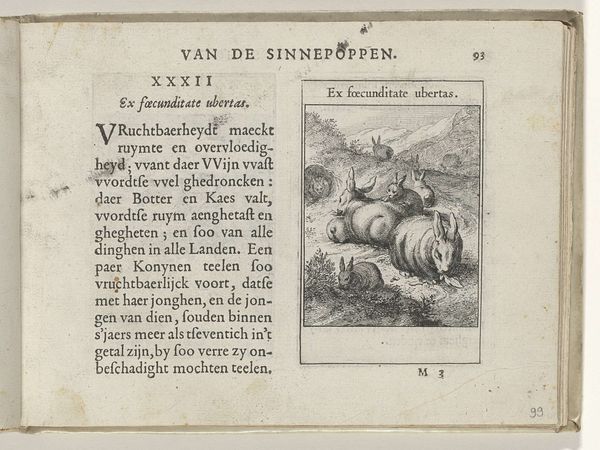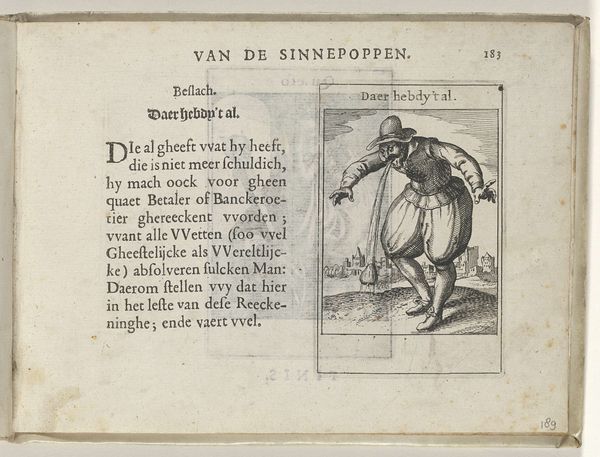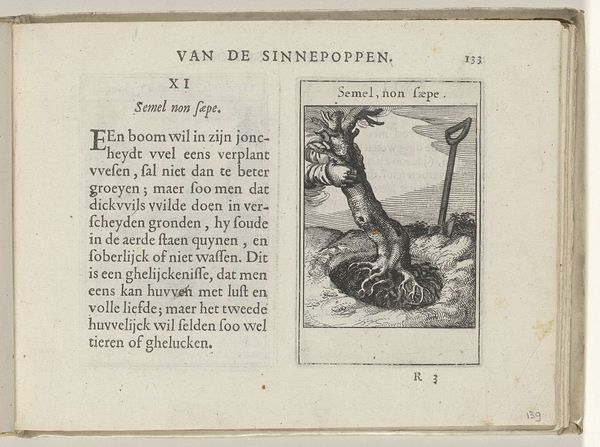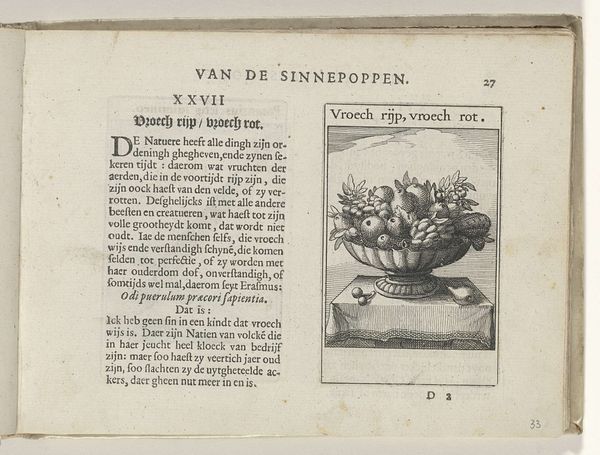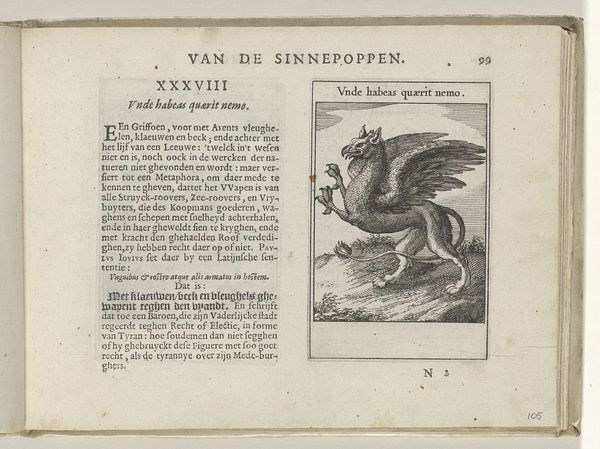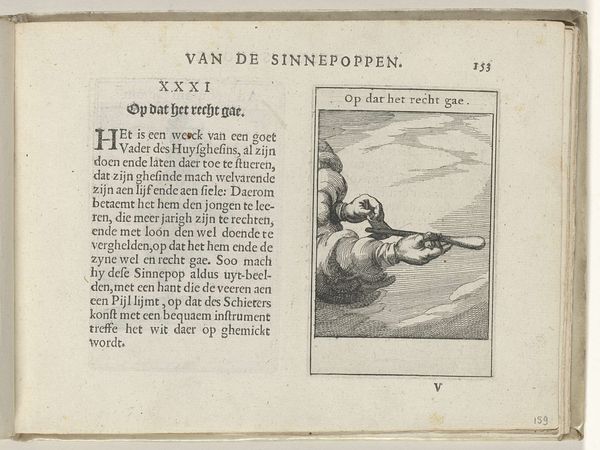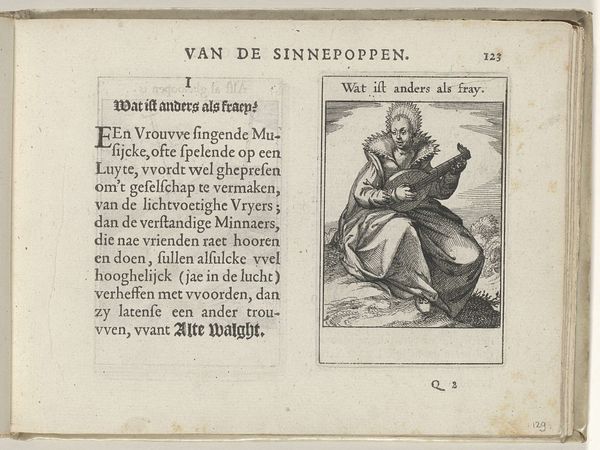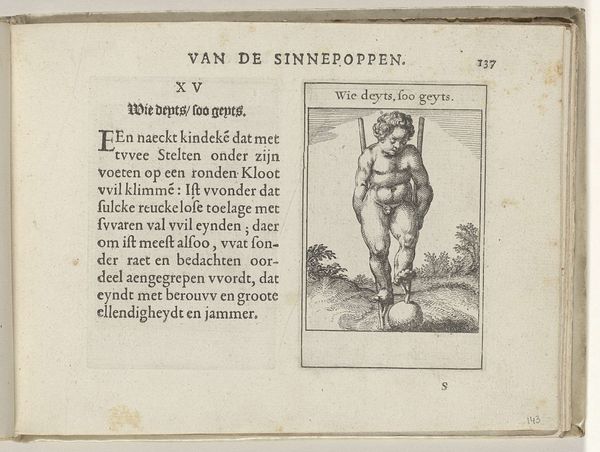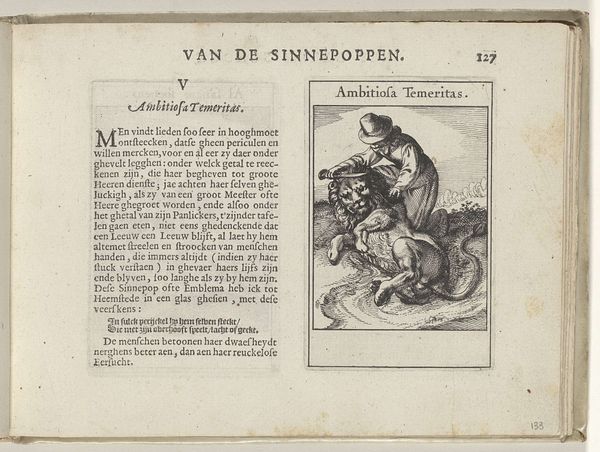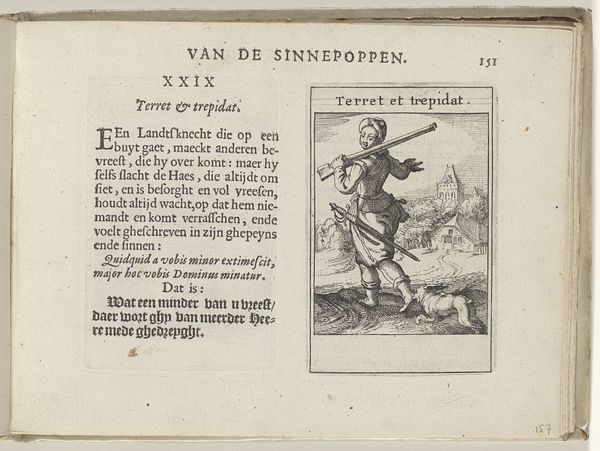
drawing, print, paper, ink, engraving
#
drawing
#
baroque
#
dutch-golden-age
# print
#
paper
#
text
#
ink
#
engraving
Dimensions: height 137 mm, width 188 mm, height 95 mm, width 60 mm
Copyright: Rijks Museum: Open Domain
Editor: This is "XXXIII Vlyen weet wat" from 1614, a print on paper by Roemer Visscher, housed here at the Rijksmuseum. The imagery is striking – it’s an odd composition, quite graphic. What’s your take on this piece? Curator: As a historian, I immediately look at the social function of prints during the Dutch Golden Age. The prevalence of printed matter – books, broadsides, and in this case, emblem books like this one – signals a broadening public sphere. Do you notice how text and image work together here? Editor: Yes, the image seems to illustrate the text, or perhaps it’s the other way around? The text does add a lot of information to the picture that alone doesn’t tell a story. Curator: Exactly. The emblem book was a popular genre, combining image and text to convey moral or political lessons. This one comes from a book called "Sinnepoppen" - roughly translated "symbols." Look at the posture in the image – awkward, strained. Given the Dutch context, consider ideas of moralizing, self-governance, and societal harmony. Editor: I see it now, the twist is that "Vlyen weet wat" (flattery knows what) the hands and rope tell the whole story if you connect them in this context. Curator: Precisely! These emblems weren't just aesthetic objects; they participated in shaping public opinion and reinforcing certain social norms. Where do you think this would have been displayed or consumed? Editor: Perhaps within homes, used for didactic purposes? A reminder about the dangers of flattery within social relationships, used at different educational stages perhaps? Curator: Very insightful. So, the next time we consider early modern prints, let's also think about its impact on a growing society with its new public image that also helps shape opinions and behaviours. Editor: Thanks! That helps connect the dots between the image, its creation, and the role it played at the time. I'll definitely look at prints differently now.
Comments
No comments
Be the first to comment and join the conversation on the ultimate creative platform.
